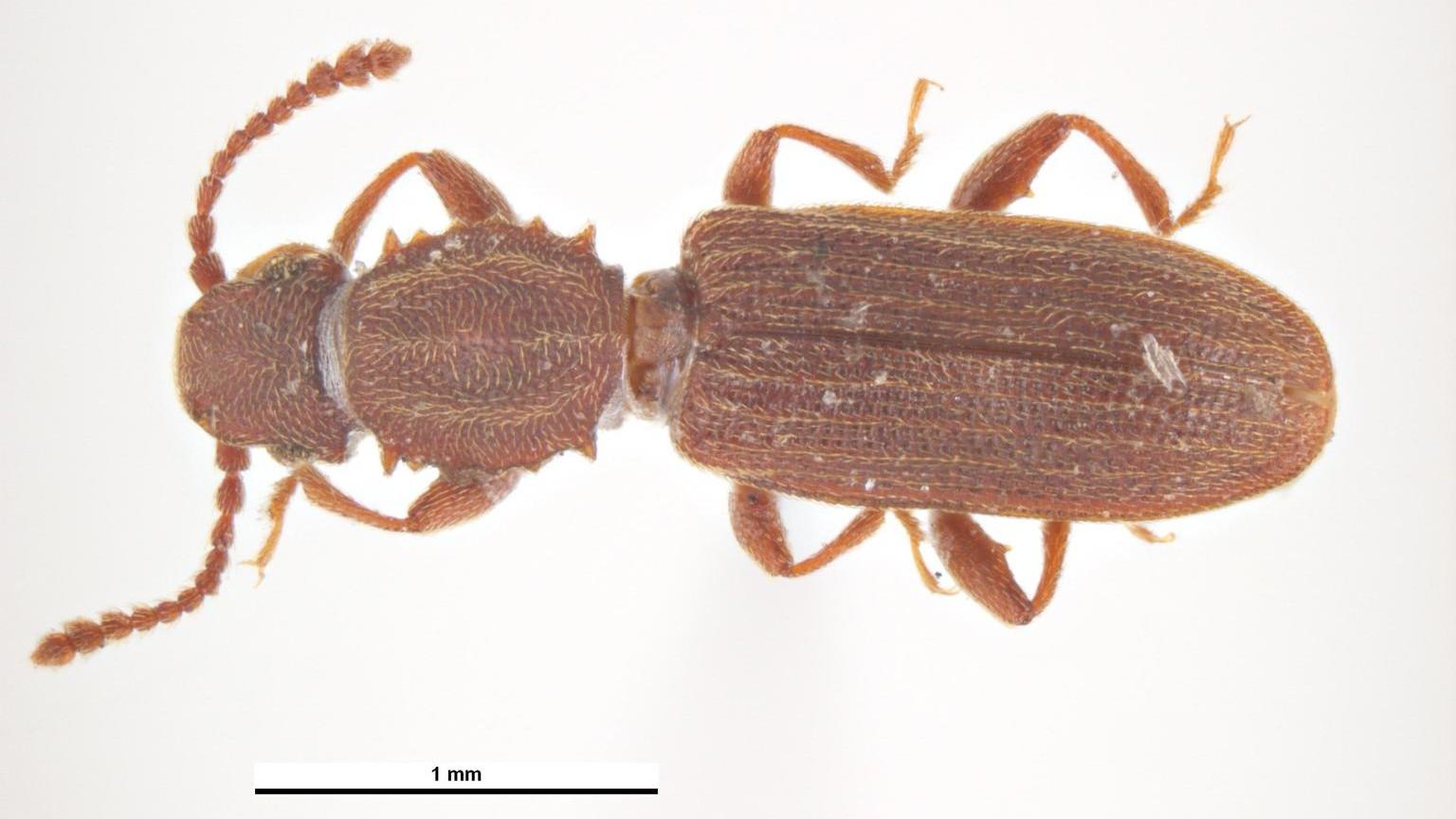Insect pests in kitchens and stored foods
-
Insect infestations in pantries and cupboards are common problems in kitchens. Pantry pests may destroy or spoil sizable quantities of food products. Most pantry pests are beetles or moths.
-
Some of the most common are the cigarette beetle, drugstore beetle, larder beetle, several flour beetles, rice and granary weevil, and the Indian meal moth. Management is the same for all pantry pests.
-
The adult sawtooth grain beetle is 1/10 inch, narrow, brown, with 6 saw-like projections on each side of the middle section of the body.
-
It can be found in the pantry, garage, or any room in the house where grain, dried fruit or bird seed may be stored.
-
These insects may be brought into the home in packages contaminated with eggs which escaped detection in milling or packaging. The resulting infestations can spread from package to package in the cupboards.
Damage and management
-
The first indication that a pest infestation exists is often the discovery of large numbers of caterpillar or worm-like immature insects crawling about in a box or container of cereal or spices.
-
When this happens the infested product can simply be discarded. A quick check of other nearby containers should be made. If no additional insects are seen, it may be assumed that the infestation was limited to that area.
-
If the first indication is the occurrence of insects crawling or flying about outside of a package, then a more thorough search for the source of the pests is necessary. All containers of dry packaged foods such as nutmeats, dried fruits, flour, meal, pasta, breakfast cereals, or spices (especially red pepper, paprika, and chili powder) must be examined carefully. Adults and small worm-like larvae may be found.
-
Unopened containers must also be checked to be sure that pests have not gained entry.
-
Infested foods should be thrown away and the shelves cleaned thoroughly to eliminate food material and insect eggs or larvae which might be in cracks or corners. Vacuum the shelves and then wash the cupboards with warm soapy water. Do not spray any food storage areas with insecticides. Clean up any food spills promptly.
-
Prevention is the best control for pantry pests. When purchasing bulk grains, fruit, flour, etc., inspect it carefully when loading it into bags for weighing.
-
Inspect it again when you get it home and put it into storage containers. Keep food in glass jars, plastic containers, or metal canisters. Glass jars that pressure seal with rubber gaskets are the best. Make sure they have tight fitting lids. Many of the pantry pests are very small and can crawl under loose fitting lids. Do not store products in plastic bags, or cardboard boxes as the insects can chew through them.
-
Try to store foods in a cool dry place. Most of the stored product pests multiply faster at higher humidity. Many products can be kept in the freezer to prevent infestation, especially products that are not used right away. Nuts, flours, meals, and dried chili peppers can all be frozen.
Rev. 2020
